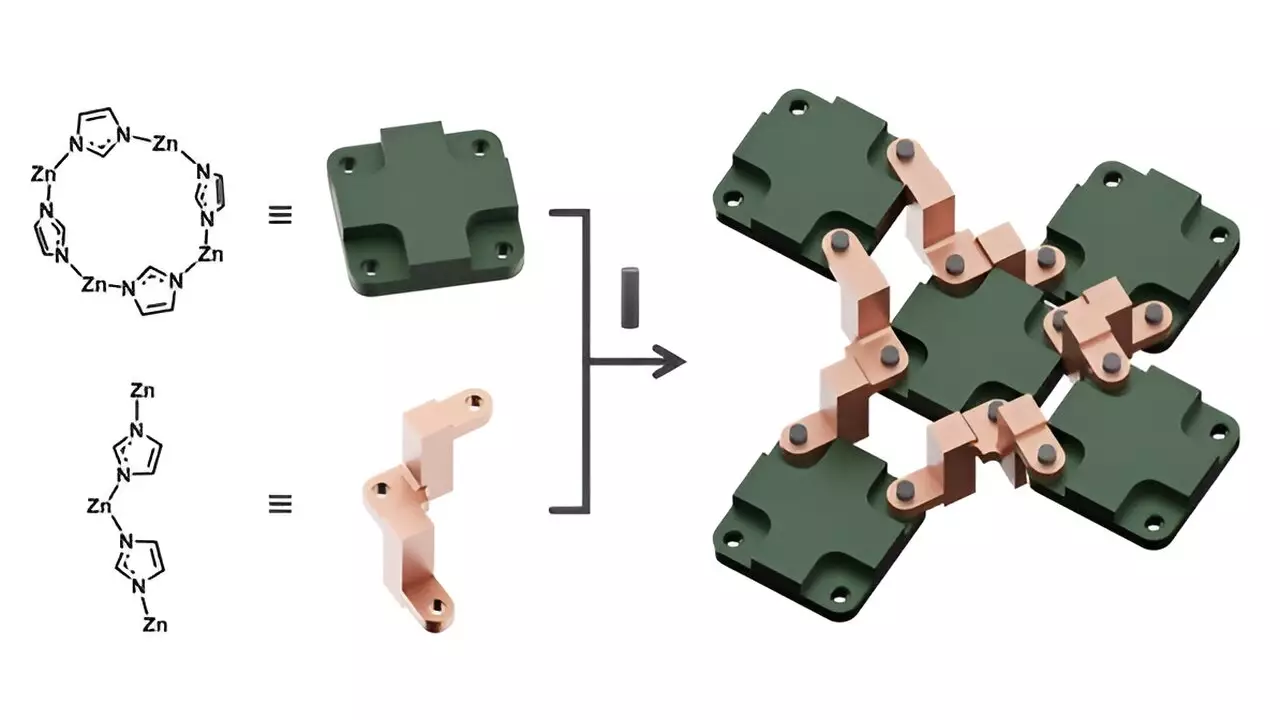The relentless progression of technology has ushered in an era where machines no longer exist solely in macroscopic dimensions. As the line between biological and artificial systems blurs, researchers are now honing in on molecular-scale mechanisms that could revolutionize industries, particularly in fields like data storage and robotics. Yet, the journey toward mastering mechanical control of these solid-state molecular structures is riddled with challenges. Nevertheless, recent breakthroughs promise to reshape our understanding of nanotechnology, transforming possibilities into realities.
A Breakthrough at UNIST
At the forefront of this transformative research is a pioneering team from the Ulsan National Institute of Science and Technology (UNIST) in South Korea, led by the innovative Professor Wonyoung Choe. Their groundbreaking study revolves around zeolitic imidazolate frameworks (ZIFs), designed to function akin to sophisticated machinery. The research team’s dedication has led to the creation of molecular devices capable of extraordinary, controlled movements at the nanoscale. This significant advancement, published in the esteemed journal Angewandte Chemie International Edition, underscores the potential of these frameworks in revolutionizing not just data storage but a variety of applications.
Engineering the Future: MOFs as Foundations
The research exploits metal-organic frameworks (MOFs) to lay the groundwork for the next generation of molecular machines. By incorporating dynamic components into these existing structures, the researchers have effectively transformed static frameworks into dynamic, operational machines. A notable highlight from their research involved the innovative use of pillared ligands that maintain machinery within the solid-state, enabling rotational movements—characteristics rarely attributed to MOFs in the past. This advancement reinforces the intersection of chemistry and engineering as they converge to create functional, mechanical behaviors at a molecular level.
Mechanics of Movement: The Slider-Crank Linkage
A key innovation in the study is the introduction of a slider-crank linkage mechanism within the structure of the ZIF, demonstrating its capability to convert rotational movements into linear actions. This highly responsive design adapts to external stimuli such as temperature fluctuations and solvent interactions, showcasing adaptability reminiscent of biological systems. The implications of this adaptability extend across numerous applications, signaling a paradigm shift. The researchers’ ability to shuffle mechanical components within solid-state machines enables mode-specific control over movements unprecedented in prior studies.
The Implications of Elasticity and Flexibility
Notably, the team identified that this innovative ZIF exhibits exceptional elasticity and flexibility compared to its counterparts. By understanding how molecular connections contribute to these properties, the researchers have laid the groundwork for developing materials that can adapt to various mechanical requirements. The nuanced interplay of metal nodes and organic ligands dictates different mechanical behaviors, a finding that could catalyze the creation of bespoke nanomaterials tailored for specific tasks.
The innovative work spearheaded by Professor Choe and his team invites us to envision a future informed by molecular machines. As we inch closer to implementing machine-like behavior at the atomic level, we stand on the precipice of a new frontier. This paradigm of engineering molecular structures not only broadens the horizons of nanotechnology but also fosters an exciting environment for novel discoveries that can reshape our technological landscape. The journey has just begun, and the potential for ingenuity is limitless.

